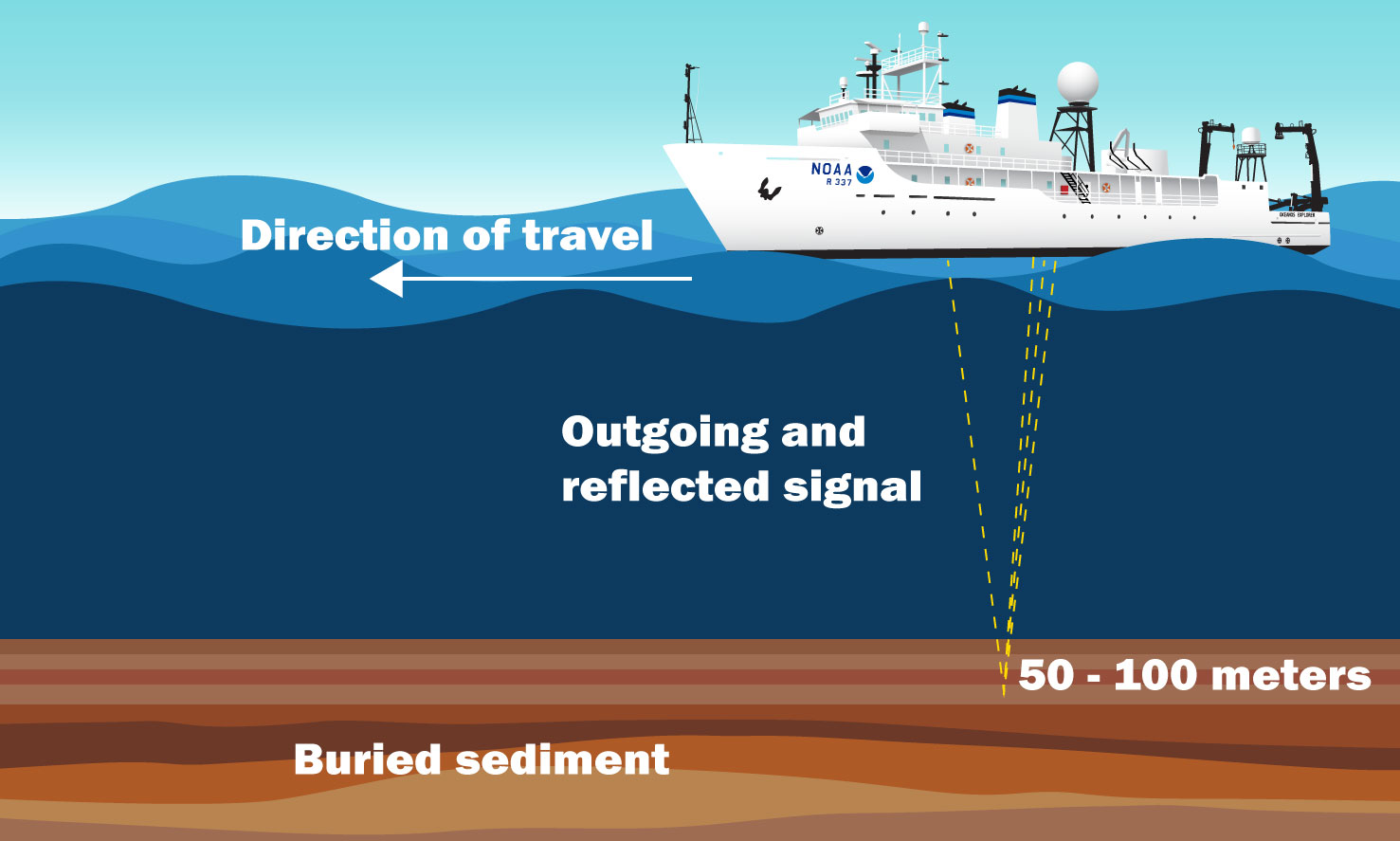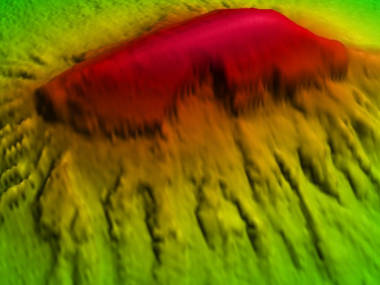Sub-Bottom Profiler
A sub-bottom profiler is a type of sonar system – a geophysical survey tool that uses sound to map beneath the seafloor. Low-frequency pulses of sound are aimed toward the seafloor, where some pulses penetrate through and are then reflected by subsurface sediment. Sub-bottom profilers can be installed in the hull of a ship or towed behind a moving vessel.

Sub-bottom profiling system mapping buried sediments and rock. Image courtesy of NOAA Ocean Exploration. Download larger version (jpg, 115 KB).
How does it work?
A sub-bottom profiler emits low-frequency sound pulses that are directed vertically at the seafloor via a transducer. When some of these pulses hit substrate, they may penetrate initial layers of seafloor before reaching horizons of various sediment types. How far the pulses penetrate, and how long they take to bounce back, will vary based on the makeup of the substrate. By calculating the time taken for a sound pulse to return to the ship, scientists can in turn determine sediment and layer composition, thickness, and other characteristics.
Some sub-bottom profiling systems, including the one installed on NOAA Ship Okeanos Explorer, emit sound pulses across a band of frequencies rather than a fixed frequency. These “chirp” systems produce a strong outgoing signal that returns high-resolution information on subsurface sediments. How well the sound energy penetrates the seafloor is dependent on the power of the outgoing signal along with oceanographic and environmental conditions (e.g., weather and sea state), sediment composition, and seafloor morphology. Coarse sediments, like sand, are more difficult for sound to penetrate than finer sediments like silt and clay.
What happens next?
Data are collected on shipboard computers and hydrographers are able to generate cross sections or vertical slices depicting sediments below the seafloor. Through interpreting these cross sections, hydrographers can identify features such as volcanic ridges, underwater landslides, ancient river beds, and other geological features.

Sediment layers seen in the sub-bottom profiler data collected from the NOAA Ship Okeanos Explorer in between the first and second dives of the 2021 North Atlantic Stepping Stones expedition. Image courtesy of NOAA Ocean Exploration, 2021 North Atlantic Stepping Stones: New England and Corner Rise Seamounts. Download larger version (jpg, 396 KB).
Why is it important?
Sub-bottom profiler data is used to generate unique perspectives of the seafloor that cannot be assessed through other technologies such as multibeam sonar. When used in conjunction with geophysical (e.g., backscatter and bathymetry from multibeam sonar) and physical (e.g., rock samples and sediment cores) data, sub-bottom profilers provide a detailed view of the marine geological environment.
Using sub-bottom profilers, scientists learn valuable information about seafloor subsurface characteristics and composition, helping them to uncover the location and morphology of submarine landslides; identify pathways for ocean gasses to move through substrate; discover ancient river channels that might contain artifacts of underwater cultural heritage; understand sediment deposition at seamounts; and much more.
The text of this article is adapted from Sub-Bottom Profiling.
Published June 26, 2023




